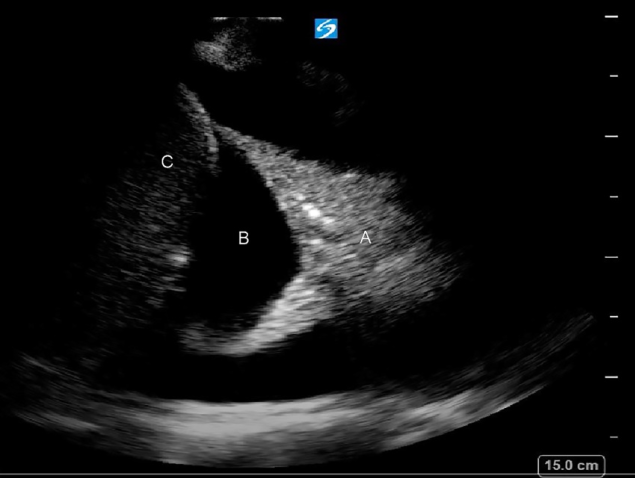Difference Between Pleurodesis and Thoracentesis
What is pleurodesis and thoracentesis?
Pleurodesis is a surgical procedure that offers permanent solution than the other interventions for curing pleural effusions. A thoracentesis get rid of excess fluid but is not able to close up the space in the pleural space. When inserting the pleural catheter, one needs continuous home maintenance, potentially for the rest of a one’s life.
Similarity
Both are medical procedures for treating pleural effusions (a buildup of extra fluid in the space between the lungs and the chest wall)

Pleurodesis
Pleurodesis is a technique used for addressing and treating accumulation of excessive fluid in the space between the lungs and the chest wall (pleural effusion). This is a condition common in people with metastatic cancer or some benign conditions such as heart or kidney failure. A large amount of fluid in the pleural space prevents your lungs from expanding properly, and makes it hard for you to breathe.

Thoracentesis
Thoracentesis is a medical procedure that uses imaging guidance and a needle for diagnosing and treating buildup of fluid in the space between the lungs and the chest wall (pleural effusions). This is a condition in which the space between the lungs and the inside of the chest wall contains excess fluid. Thoracentesis helps diagnose the cause of the excess fluid. It also helps ease any shortness of breath or pain by removing the fluid and relieving pressure on the lungs. However, the process is not able to drain more than 1000 ml of excess fluid.
Difference between pleurodesis and thoracentesis
Definition
Pleurodesis
Pleurodesis is a procedure that uses a mildly irritant drug to get the two layers of the lung’s lining (the pleura) to stick together.
Thoracentesis
Thoracentesis, also termed as pleural tap, thoracocentesis, needle thoracostomy or needle decompression, is a procedure to withdraw fluid or air from around the lungs
Health issues diagnosed
Pleurodesis
- Pneumothorax – recurring collapsed lung
- Pleural effusion – ongoing build-up of fluid around the lungs
Thoracentesis
- Malignancy (Cancer)
- Congestive heart failure (CHF) – the most common cause of pleural effusion
- Bacterial fungal and viral, infections
- Pulmonary embolism (A blood clot in the lung)
- Liver failure
- Pancreatitis – Inflammation of the pancreas
- Systemic lupus erythematosus (SLE) and other autoimmune disease
- Empyema – an area of pus in the pleural space
- Tuberculosis (TB)
- Pneumonia
- Reactions to medicines
Advantages
Pleurodesis
Advantages include:
- Minimally invasive, can be outpatient
- Direct visualization, immediate and complete drainage
- High diagnostic yield of biopsy
- High pleurodesis rate
- Increased patient satisfaction
Thoracentesis
Advantages include:
- Minimally invasive
- Outpatient
Disadvantages
Pleurodesis
Disadvantages include:
- Very costly
- Inpatient hospitalization
- May need thoracostomy following procedures
Thoracentesis
Disadvantages include:
- No pleurodesis achieved following the procedure
- Frequent need for additional procedures
Complications
Pleurodesis
Risks after procedure include
- infection
- a collection of pus in the pleural space (empyema)
- fever
- pain
If you also have a thoracostomy, possible complications can include:
- Blood clots
- Collapsed lung
- A tube that’s could move out of place
- Injury to the lungs, arteries, and chest wall
Thoracentesis
Complications include:
- Damage to the spleen or liver
- Pain
- Bleeding
- Infection
- Air embolism
- Re-expansion pulmonary edema (REPE)
- Shortness of breath
- Atelectasis
- Cardiac tamponade (fluid buildup in the space between myocardium and pericardium)
Summary
The points of difference between Pleurodesis and Thoracentesis have been summarized as below:

FAQ
When is Pleurodesis used?
It is a medical technique meant to get the two layers of the lung’s lining to stick together in order to prevent the buildup of fluid in the space between the pleural space.
What is the meaning of Pleurodesis?
It is a medical procedure or intervention that makes use of chemicals or drugs in order to induce adherence between the layers of the pleura (a thin layer of tissue that envelops the lungs and lines the interior wall of the chest cavity).
Why is a pleurodesis performed?
The procedure of pleurodesis is performed to block out the pleural space (the potential space between the pleurae of the pleural sac that envelops each lung) to prevent recurrent pleural effusion or pneumothorax or to treat a persistent pneumothorax.
Which intercostal space is used for thoracentesis?
Procedure-technique-equipment-position. The recommended intercostal space used for thoracentesis is mid-axillary line in the 6th, 7th, or 8th intercostal space.
- Difference Between Global Warming and Greenhouse Effect - May 18, 2024
- Difference Between Vaccination and Immunization - March 3, 2024
- Difference Between Selective Mutism and Autism - February 25, 2024
Search DifferenceBetween.net :
Leave a Response
References :
[0]Antony, V. B., Loddenkemper, R., Astoul, P., BOUTIN, C., & GOLDSTRAW, P. (2000). Management of malignant pleural effusions. American Journal of Respiratory and Critical Care Medicine, 162(5), 1987-2001.
[1]Burgers, J. A., Kunst, P. W. A., Koolen, M. G. J., Willems, L. N. A., Burgers, J. S., & van den Heuvel, M. (2008). Pleural drainage and pleurodesis: implementation of guidelines in four hospitals. European Respiratory Journal, 32(5), 1321-1327.
[2]DeBiasi, E. M., & Puchalski, J. (2016). Thoracentesis: state-of-the-art in procedural safety, patient outcomes, and physiologic impact. Pleura, 3, 2373997516646554.
[3]Rodriguez-Panadero, F., & Montes-Worboys, A. (2012). Mechanisms of pleurodesis. Respiration, 83(2), 91-98.
[4]Image credit: https://live.staticflickr.com/65535/48847083487_4eb5d972ed_b.jpg
[5]Image credit: https://upload.wikimedia.org/wikipedia/commons/thumb/2/24/6491083.fig.003.svg/635px-6491083.fig.003.svg.png
